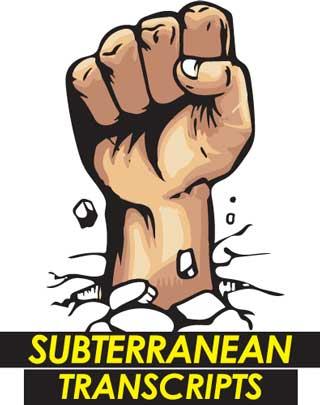09 Mar 2023 - {{hitsCtrl.values.hits}}
 Kanchana Wijesekera was all, but salivating in a tweet following trade union action launched by Ceylon Electricity Board (CEB) employees. Pointing out that despite the strike, operations continued, he did obtain some traction for the government’s plan to restructure the CEB.
Kanchana Wijesekera was all, but salivating in a tweet following trade union action launched by Ceylon Electricity Board (CEB) employees. Pointing out that despite the strike, operations continued, he did obtain some traction for the government’s plan to restructure the CEB.
Arguments for restructuring are typically underscored by references to revenue. The recently implemented tariff revision was accompanied by heavy rhetoric on the need to increase the CEB’s revenue. Let’s deal with that first.
The unfairness and intellectual dishonesty has been widely discussed. In fact it has generated protests all over the country with low-end consumers taking to the streets insisting that they cannot afford to pay their bills and moreover will collectively resist any attempts to sever their connections. If it was about increasing revenue to meet (inflated, mind you) costs, the ‘mila sutraya (pricing formula) adopted could easily be amended.
 Kanchana takes refuge in averages. A simple example would easily refute the lunacy: per capita income. It averages out incomes so that the newborn baby and the nonagenarian are both assumed to be earning approximately US$4,000 per annum. That’s around Rs.1.3 million at the current exchange rate or roughly a little over Rs.100,000 a month. The truth is that the average household income is around US$1,500 a year, which translates into less than Rs. 40,000 a month. That’s the average, which means that your typical low-end electricity consuming household would be earning much less. Kanchana has hit them hard. He cushioned the ‘average-raisers’ who, let us not forget, play an important role in forcing Sri Lanka to import coal, diesel etc.
Kanchana takes refuge in averages. A simple example would easily refute the lunacy: per capita income. It averages out incomes so that the newborn baby and the nonagenarian are both assumed to be earning approximately US$4,000 per annum. That’s around Rs.1.3 million at the current exchange rate or roughly a little over Rs.100,000 a month. The truth is that the average household income is around US$1,500 a year, which translates into less than Rs. 40,000 a month. That’s the average, which means that your typical low-end electricity consuming household would be earning much less. Kanchana has hit them hard. He cushioned the ‘average-raisers’ who, let us not forget, play an important role in forcing Sri Lanka to import coal, diesel etc.
So, if X is the amount of revenue envisaged, that X could be made in many different ways and any CEB engineer ought to have the math skills required to come up with a more just tariff structure. Wasn’t done. What was done, in essence, was to punish the low-end categories of consumers for the ‘crime’ of those who for whatever reason escape the long arms Inland Revenue Department. Your typical vegetable vendor, the three-wheeler driver, the domestic aides, masons, carpenters and other day-wage earners, none of whom are wallowing in wealth and have the knowledge or wherewithal to get away with delayed payments or waiving of relevant interest charges.
Yes, the bulk consumers in Colombo alone, thousands who never pay on time. They include government institutions, hospitals, the police, embassies, thriving businesses in the commercial part of the city and super luxury hotels. The last is an interesting category. They enjoyed Covid-19 breaks even though they didn’t lack business thanks to being equipped to provide quarantine facilities. Many didn’t pay the bills even after the grace period ended. Some paid only after the interest charges were waived. That’s hundreds of millions of rupee income that the CEB lost. Kanchana and his restructuring committee can commission a full audit and thereafter name and shame the shameless.
Let’s take a look at the CEB itself. Doesn’t Kanchana know that all grades of employees from engineers upwards, with full complicity and endorsement of those who sat and sit on the CEB’s Board of Directors, have wrangled all manner of perks which, as allowances, amount to well over double their salaries? These include an engineering allowance (so, doctors should get a healing allowance, masons a bricklaying allowance etc?), an allowance for not leaving the country (!), vehicles with drivers and in practical terms unlimited fuel (they are required to pay for fuel consumed in personal use, but that’s only if someone points it out, and self-driving officials maintain their own running charts!), plush ‘quarters’ not too far from their own homes for which the CEB pays rent (sometimes Rs. 100,000 per month or more!), a generation allowance, a ‘disturbance allowance (essentially a payment for being on-call; an audit might reveal how ‘essential’ this ‘service’ is!),’ other perks that come under ‘project allowances,’ and probably other such money-making mechanisms, carefully designed and jealously guarded.
Projects. Interesting word there. Even a rural electrification assignment is labelled ‘a project’ so that the relevant allocations can be channeled to personal bank accounts.
Why an allowance for not leaving the country, though? Is it that the General Manager, Additional General Managers (AGMs), Deputy General Managers (DGMs) and engineers under them will quit the CEB en masse if this allowance was withheld? Is it that there are no competent and qualified personnel in the ‘non-engineering’ categories below them who are willing to replace them or that engineers currently not employed by the CEB are not interested in taking up such positions? If the CEB is over-staffed (and it certainly seems to be), then pruning should start, logically, at the top. A VRS to deal with redundancy might be cost-effective, really. If there were just 400 instead of 950 engineers, for example, the savings on salary alone would be close to Rs.300 million per month. Maybe they do need the 900 plus engineers. If so, the onus is on the CEB to explain why, supporting arguments with tasks, responsibilities, KPIs and relevant performance assessments.
Quarters. There’s more to it. The CEB has not been too interested in refurbishing quarters it owns or building new ones. It’s the same with vehicles. Arguments are made to the effect that renting vehicles is cost-effective considering payments to be made to drivers, routine repairs etc. Most of these officials don’t make use of drivers though. There have been instances where renovations and repairs to quarters and vehicles respectively have proved to be the more cost-effective option.
Procurement. That’s a cash cow. Only, purchased above a certain value require Board approval. Remedy: break it down to ‘pieces’ lower than this value. Bingo! Sure, the receipts will all be there. All the necessary approval. It’s called legal theft, robbing the tax-payer (and we are all taxed directly or indirectly, low-end consumers as well, who, as things stand, are being punished for the damage caused by CEB’s wildlife).
Then there’s sheer incompetence and mismanagement, best exemplified by the scandal associated with the 165 MW naphtha-fuelled combined cycle unit commissioned in August 2002, consisting of a 110 MW gas turbine and a 55 MW steam turbine, and one exhaust heat recovery boiler. Naphtha was obtained from the Sapugaskanda Oil Refinery at Rs. 75 per litre (at a time when diesel was Rs. 115 per litre), making it the cheapest fuel. The plant was idle for three years due to poor maintenance. India moved in to buy naphtha from Sapugaskanda at just Rs. 30 per litre. The loss? Multiply Rs. 45 by 36 by 80 million (the monthly output): almost Rs.130 billion!
A defective component was sent to India for repairs and, when it was returned, was erroneously installed. Meanwhile other components, ill-maintained, had to be replaced. Some 80 odd technical staff remained idle. Things that could have been attended to simultaneously were neglected. It cost the CEB. It cost the country. No inquiry. No punishment. Business as usual in the CEB. And now, Kanchana passes the buck to the low-end consumer.
The CEB is notorious for creating positions, manufacturing additional divisions so that those who get promoted can get placements and the perks that go with these. Kanchana and his committee could review the CEB’s organisational structure and how it has evolved, exacerbating redundancy, eating into profits and so on. Why so many AGMs? Why so many DGMs? Why are they doubling up as project managers? Is the work so ‘extra’ that they deserve massive compensation of such massive proportions?
Kanchana has (deliberately?) latched on to the wrong end of the stick. The CEB is not a white elephant. No. It is a massive kraal full of white elephants. Kanchana has the eyes to see all this. Why then is he looking the other way? Why then is he disproportionately burdening the low-end consumer? Is his restructuring exercise going to do something about the rampaging white elephants in the CEB? Is he deliberately pushing the ‘low-end’ employees of CEB into union action with termination and privatisation in mind?
All this, ladies and gentlemen, is iceberg-tip. Space stops a consideration of the power generation-structure, renewables etc. Suffice to say that the white elephants have created an excellent business model, not for the CEB, the country or the consumers but themselves. Maybe, and one hopes, it is just a few white elephants for I am sure there are many engineers in the CEB, perhaps even hundreds, who are competent and have integrity. If that’s the case, then these rogues are not white elephants, they are white mammoths! Is Kanchana going to ensure the ‘sustained development’ of this model and are the most dispossessed of Sri Lanka’s citizenry being forced to pay for it? Questions. Questions. Questions.
[email protected]. www.malindawords.blogspot.com
08 Jan 2025 14 minute ago
07 Jan 2025 7 hours ago
07 Jan 2025 7 hours ago
07 Jan 2025 8 hours ago
07 Jan 2025 07 Jan 2025